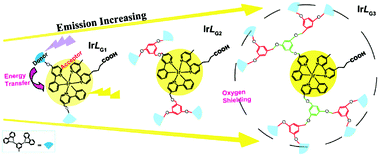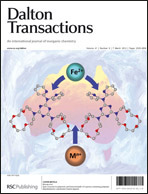Synthesis and properties of a dendritic FRET donor–acceptor system with cationic iridium(iii) complex core and carbazolyl periphery†
Abstract
In order to enhance the photoluminescence of cyclometalated iridium(III) complexes, which are potentially useful for biolabeling and bioimaging, a series of


 Please wait while we load your content...
Please wait while we load your content...